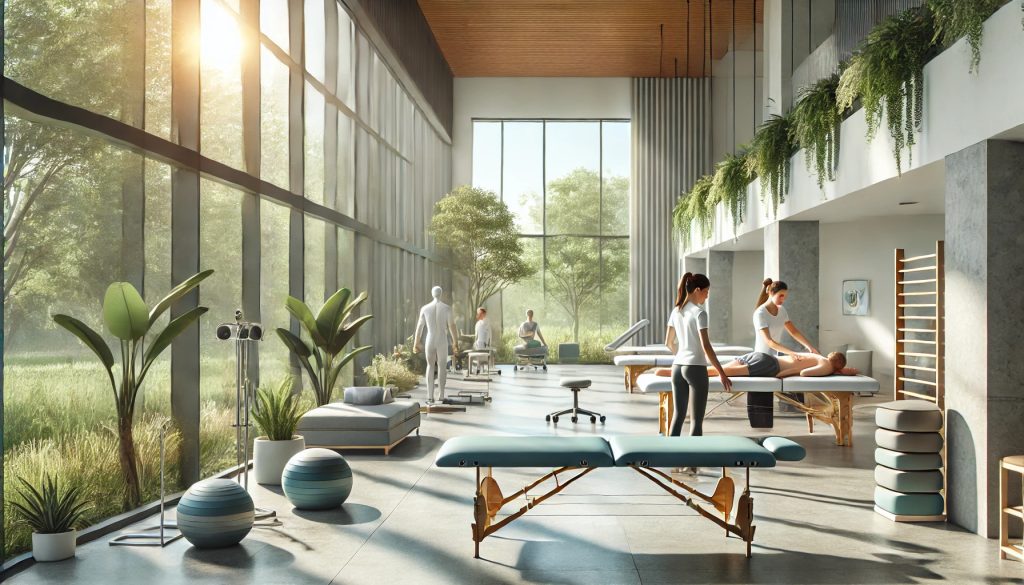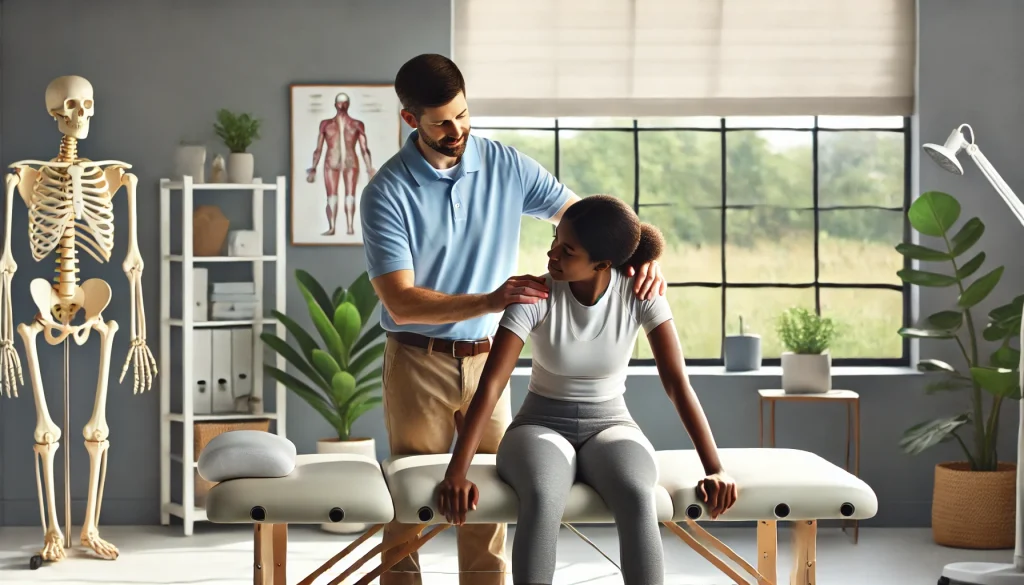In today’s fast-paced world, many people are turning to physical therapy to treat injuries, manage pain, and improve their overall quality of life. If you’re in Arvada, Colorado, and searching for a solution to physical pain or mobility issues, personalized physical therapy can make a world of difference. Physical therapists at Manual Therapy Associates understand that every body is unique, and they provide custom treatment plans to ensure you get the care you need. But what is physical therapy, and how can it help you recover?
What Is Physical Therapy Usually For?
Physical therapy (PT) is a healthcare specialty that focuses on the prevention, treatment, and management of physical dysfunction and pain. It is typically used to address injuries, chronic pain, post-surgery recovery, and mobility issues. The goal is to restore your body to its optimal function by improving movement, reducing pain, and enhancing strength. Here are a few common reasons why people seek physical therapy:
1. Rehabilitation After Injury
Whether it’s a sports injury, an accident, or a fall, injuries often limit mobility and cause pain. Physical therapy helps patients regain strength, flexibility, and coordination. Common injuries treated include sprains, fractures, and ligament tears. Through exercises and manual therapy, the therapist helps you recover faster and avoid future injury.
2. Post-Surgical Recovery
After surgeries such as knee replacement, rotator cuff repair, or back surgery, your body needs time to heal. Physical therapy assists in regaining strength, improving range of motion, and reducing scar tissue formation. It also plays a role in pain management, helping patients transition back to daily activities sooner.
3. Chronic Pain Management
Living with chronic pain can be debilitating. Conditions like arthritis, fibromyalgia, or persistent back pain are often managed through physical therapy. By employing targeted exercises, manual therapy, and other modalities, therapists can help reduce discomfort and enhance your ability to perform daily tasks.
4. Improving Mobility and Balance
Physical therapy isn’t just for injuries. If you’re having trouble with walking, balance, or coordination, PT can help improve your functional movement. Older adults, in particular, benefit from therapy that focuses on fall prevention and maintaining independence.
5. Sports Performance and Injury Prevention
Athletes often turn to physical therapists not just to recover from injuries but also to enhance performance. By addressing muscle imbalances, improving flexibility, and optimizing movement patterns, therapists help athletes prevent injuries and reach their full potential.
The Benefits of Personalized Physical Therapy
At Manual Therapy Associates in Arvada, the emphasis is on personalized care. But what does that mean for you? It means your treatment plan is designed specifically to meet your needs. No two bodies are alike, and no two injuries heal in the same way. Here’s why a personalized approach is essential:
1. Tailored Treatment Plans
When you visit Manual Therapy Associates, your therapist takes the time to understand your health history, lifestyle, and personal goals. Whether you want to get back to playing tennis or simply move without pain, your plan will be customized to meet those specific objectives. This individualized care ensures the best possible outcomes.
2. One-on-One Attention
Personalized therapy often includes one-on-one time with your therapist. This allows them to assess your progress and adjust your treatment as needed. Whether you’re working on mobility, strength, or pain reduction, this close attention can make a big difference in your recovery journey.
3. A Holistic Approach
Physical therapy isn’t just about treating the site of the pain or injury. It’s about looking at the body as a whole. At Manual Therapy Associates, therapists focus on how different parts of your body interact. For instance, knee pain could be linked to an issue with your hips or back. By taking a holistic approach, they can address the root cause of the problem rather than just the symptoms.
4. Manual Therapy Techniques
One of the unique aspects of Manual Therapy Associates is their use of hands-on techniques. Manual therapy involves manipulating muscles and joints to reduce pain and improve mobility. This hands-on approach can help release tension, improve blood flow, and promote healing in a way that exercise alone cannot.
How Often Should Physical Therapy Be Done?
One of the most common questions patients ask is, “How often should I come to physical therapy?” The answer depends on several factors, including the nature of your injury or condition, your overall health, and your treatment goals.
1. Acute Injuries or Post-Surgical Recovery
For acute injuries or after surgery, physical therapy is usually more frequent. In the first few weeks, you might attend sessions two to three times per week. This frequent treatment helps to jumpstart the healing process and ensures that you’re progressing as expected.
2. Chronic Conditions
If you’re managing a chronic condition like arthritis or lower back pain, you may need to attend therapy less often—perhaps once or twice a week. Since chronic conditions often require long-term management, your therapist will space out appointments and provide exercises for you to do at home.
3. Maintenance and Prevention
Some patients choose to continue physical therapy as a form of preventive care, especially athletes or those prone to recurring injuries. In these cases, therapy may be done once a month or even less frequently. The goal is to maintain the progress you’ve made and prevent any setbacks.
4. Your Personal Goals
Your recovery time and therapy frequency will also depend on your personal goals. If you’re looking to get back to an active lifestyle, more frequent sessions may be recommended at the beginning, tapering off as you make progress.
What to Expect During a Physical Therapy Session
A typical physical therapy session at Manual Therapy Associates is designed to meet your specific needs. Here’s what you can expect:
1. Initial Assessment
Your first session will involve a thorough evaluation. Your therapist will ask about your medical history, current symptoms, and goals for therapy. They may assess your strength, flexibility, range of motion, and posture to create a tailored treatment plan.
2. Hands-On Manual Therapy
If manual therapy is part of your treatment, you’ll receive hands-on techniques to improve joint mobility, relieve muscle tension, and reduce pain. These techniques may include myofascial release, joint mobilization, or stretching.
3. Therapeutic Exercises
Exercises are a core component of most PT programs. These may include strength training, stretching, or balance exercises tailored to your condition. Your therapist will guide you through proper techniques and may give you exercises to do at home to continue your progress.
4. Modalities for Pain Relief
To complement manual therapy and exercises, your therapist may use modalities like dry needling, ultasound, or electrical stimulation. These treatments can help reduce pain and promote healing.
Check out our Facebook for more news!
Conclusion: Personalized Physical Therapy in Arvada
Physical therapy offers a highly effective, non-invasive way to recover from injuries, manage pain, and improve overall mobility. At Manual Therapy Associates in Arvada, the team is committed to providing personalized care tailored to your unique needs. Whether you’re recovering from surgery, managing a chronic condition, or simply trying to improve your mobility, their therapists can help guide you on the path to optimal recovery.
FAQs
What conditions can physical therapy treat?
Physical therapy treats a wide range of conditions, including sports injuries, chronic pain, post-surgical recovery, arthritis, and mobility issues.
How long does physical therapy usually last?
The duration of physical therapy varies depending on the individual’s condition. It can last anywhere from a few weeks to several months.
Is physical therapy painful?
While some discomfort is normal, especially when working on injured areas, physical therapists strive to minimize pain and ensure treatments are manageable.
Can I do physical therapy exercises at home?
Yes, many physical therapy programs include home exercises. Your therapist will provide you with a set of exercises to continue your recovery between sessions.
Do I need a referral to see a physical therapist?
Colorado is a direct access state, meaning a referral is not required. However, if the clinic you choose submits claims to insurance it is best to check with your insurance provider.






